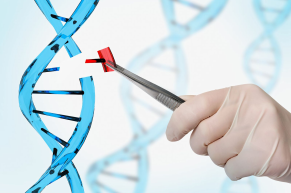Gene editing and the future of human evolution
Simone Rothaupt. 11/07/2020

Over the course of millions of years, homo sapiens have evolved into the dominant organism across the globe because humans are the only animals capable of working flexibly and creatively in large groups, according to bestselling author and doctoral graduate from the University of Oxford Yuval Harari.
Even though we have developed such advanced cognitive function and physical abilities, scientists like Dr. Alywyn Scally of the University of Cambridge assert humans are still evolving. Scientists from Stanford University revealed, using data from 3,000 genomes collected across the United Kingdom, that height, head circumference in infants and hip size in females (factors relevant to birth) have undergone selection in the past 2,000 years. In another study by Stanford University, researchers found that traits like lactose intolerance and blond hair and blue eyes have spread rapidly in the past 2,000 years. An investigation by evolutionary geneticists Joseph Pickrell and others claims that the ApoE4 allele, which is connected to Alzheimer’s disease, has dropped in frequency over time as carriers die earlier on in life.
In addition to the traditional methods of evolution, humans have now finally harnessed a technique known as gene editing, which controls life down to the genetic level void of natural influence. The most familiar version of gene editing, known as clustered regularly interspaced short palindromic repeats-associated protein 9 (CRISPR-Cas9), utilizes a naturally-occurring bacterial complex. The National Human Genome Research Institute explains that bacteria creates CRISPR arrays, or DNA snippets, from segments of an invading virus’ DNA, allowing for the bacteria to form RNA segments to recognize the same virus if it returns. Once the virus is located, the Cas9 enzyme is used to cut the virus’ DNA apart to destroy it.
For human application, the US National Library of Medicine states that scientists create, with CRISPR-Cas9, an RNA segment that can be used to recognize the part of DNA that needs to be edited. Once the correct DNA location is found, the Cas9 enzyme cuts the DNA, and the cell’s built-in methods for repairing damaged DNA, such as base repair excision, are manipulated to customize the sequence. The Cpf 1, CasX, Cas Y, and other enzymes are also used for cutting DNA as they can be more precise and accurate. Though other gene-editing methods exist such as homologous recombination and zinc-finger nucleases (ZFN), CRISPR-Cas9 has become the most popular as it is more accurate, efficient, cheaper and faster than most alternatives.
According to the National Cancer Institute, gene editing has the potential to cure genetic diseases such as sickle cell, Huntington’s, and even cancer. Time reported that Editas Medicine and Allergan, both prominent pharmaceutical companies, are working on testing CRISPR-Cas9 for congenital vision diseases, such as Leber congenital amaurosis 10. Similarly, Vertex Pharmaceuticals and CRISPR Therapeutics are attempting to utilize gene editing for curing blood diseases, such as beta thalassemia and sickle cell anemia. For the Allergan and Editas Medicine Leber congenital amaurosis 10 treatment study, a single mutation in the centrosomal protein 290 gene can be removed through CRISPR technology so that photoreceptor cells can detect light properly. For the CRISPR Therapeutics and Vertex beta thalassemia study, diseased bone marrow cells will be replaced with stem cells altered with CRISPR technology to turn on fetal hemoglobin production as the adult hemoglobin production genes for patients of this disease do not function properly.
The Guardian proposes that humans will now evolve more rapidly and in more ways than ever before. Changes to the human genome will no longer occur across thousands of years, but in a single lifetime. Previously, the selection of a single gene was considered a massive shift in evolution, but with gene editing, thousands of genes can quickly be altered.
Even though it appears that the potential for gene editing is limitless, debates loom large in this field. Nature Research warns that scientists must be extremely careful when choosing genes to alter as genes can have three to four unrelated functions. This means that removing a gene could have unintended and often unpredictable consequences, such as a weakened protection against lungs, liver and brain diseases. According to the National Human Genome Research Institute, the field of gene manipulation is filled with controversy, such as fears that only the wealthy will have access to genome editing, as well as moral and religious objections to the testing of human embryos.
Though CRISPR-Cas9 can cure countless diseases, the threat of unethical misuse has prevented the rapid adoption of this novel technology. For the first time, an organism will be able to dictate its own evolution, and gene editing will hopefully be able to change the world for the better.
Cover Photo: (iStockphoto / Vitaliy Smolygin)

Simone is a sophomore at Thousand Oaks High School in Ventura, California. She is interested in exploring STEM related topics, such as medicine, and she also hopes to spread this passion to others through writing.